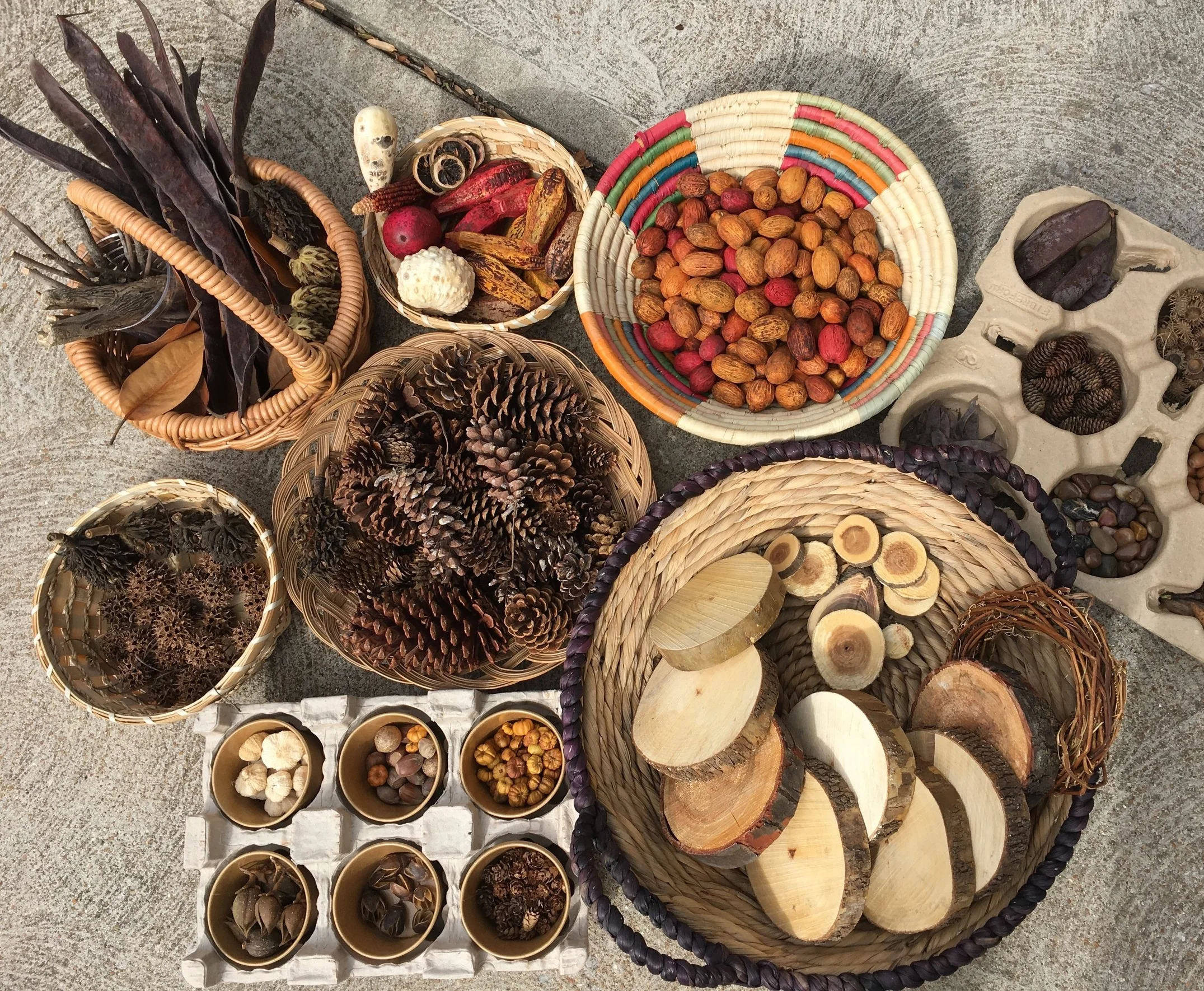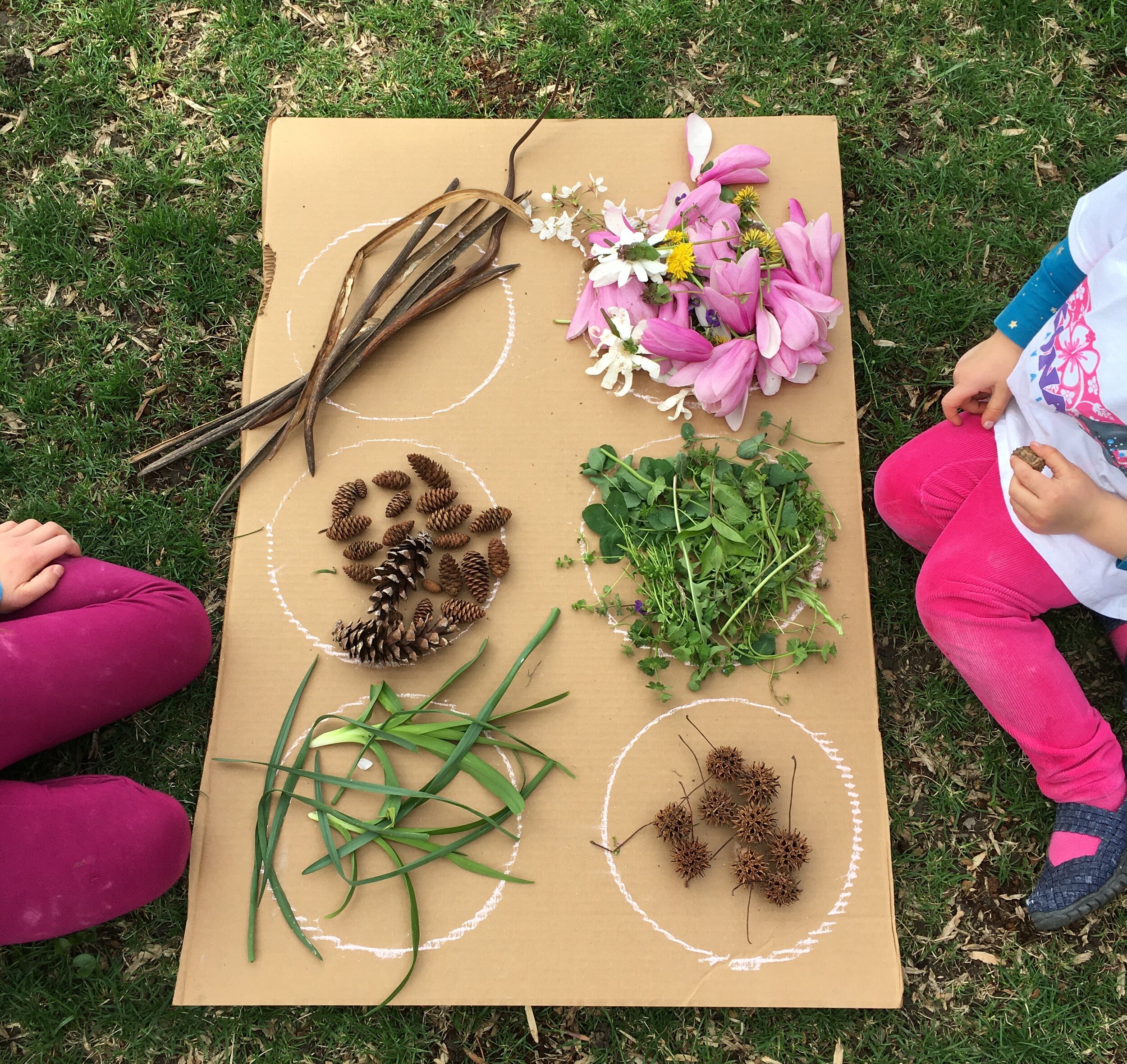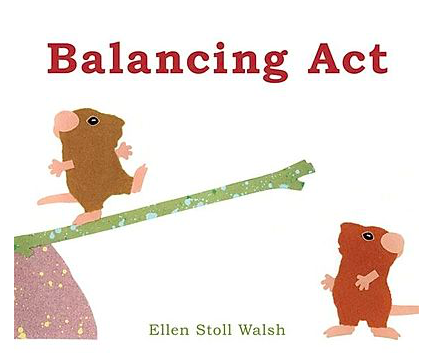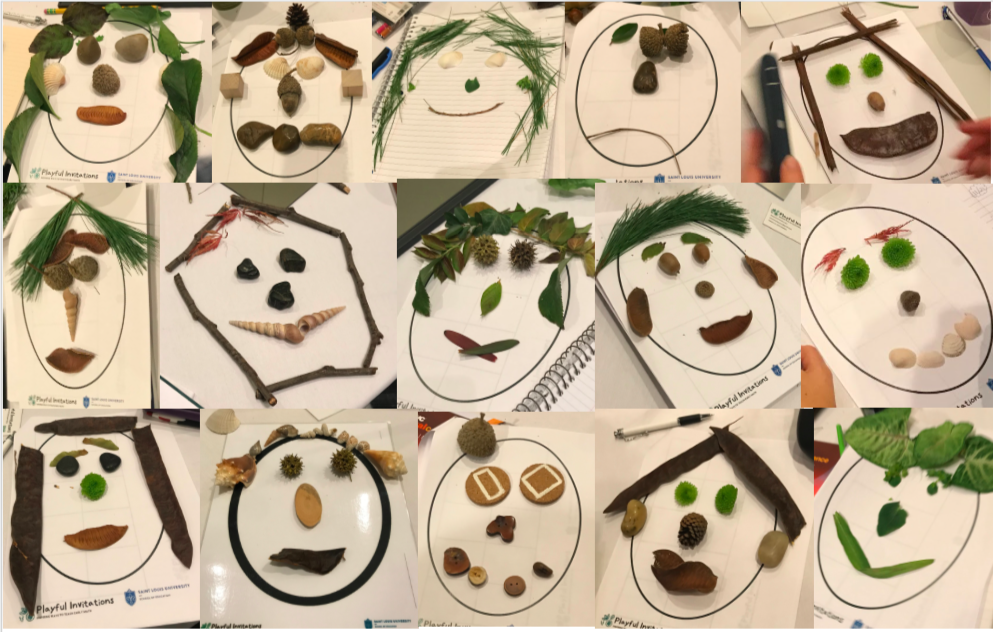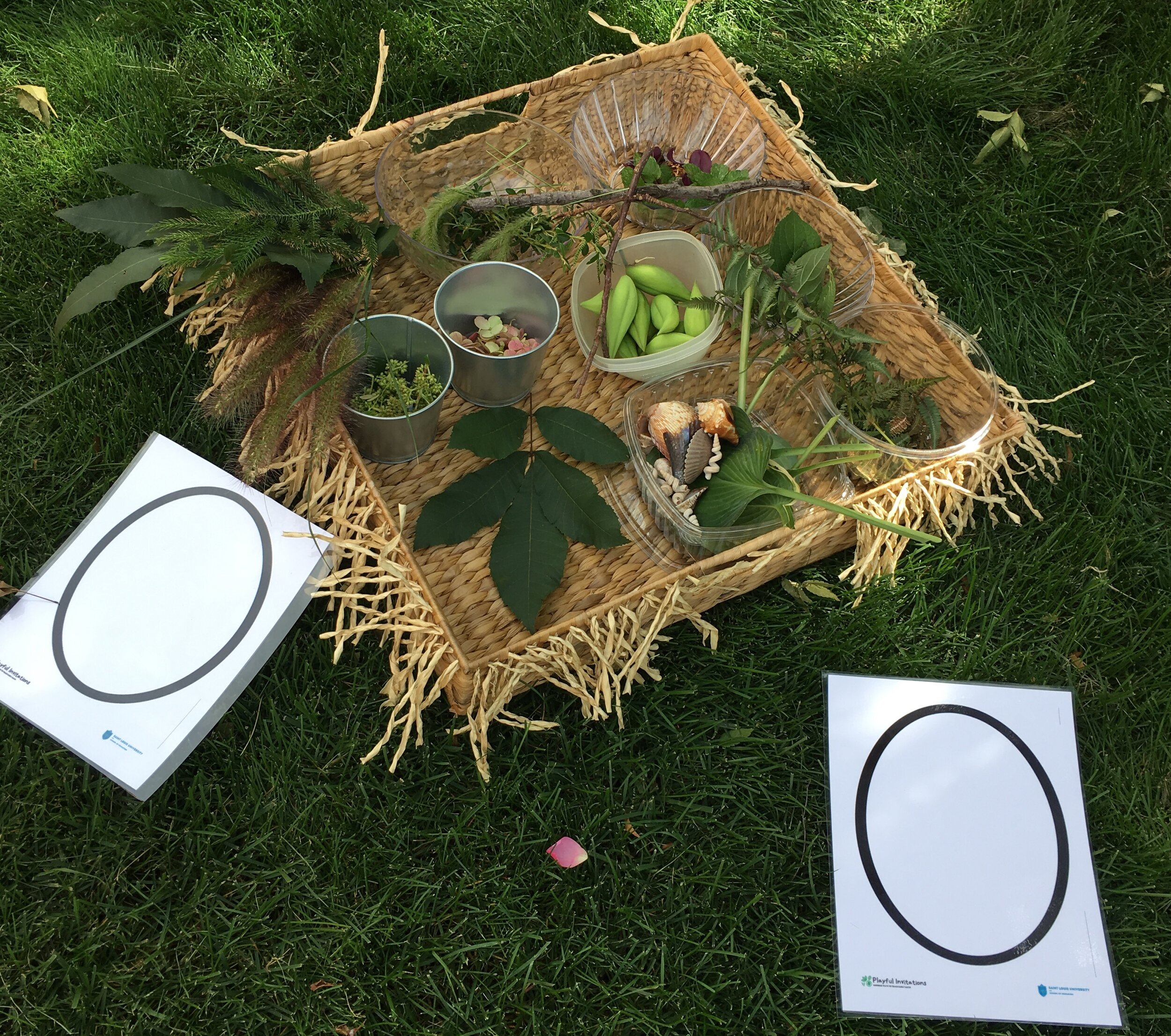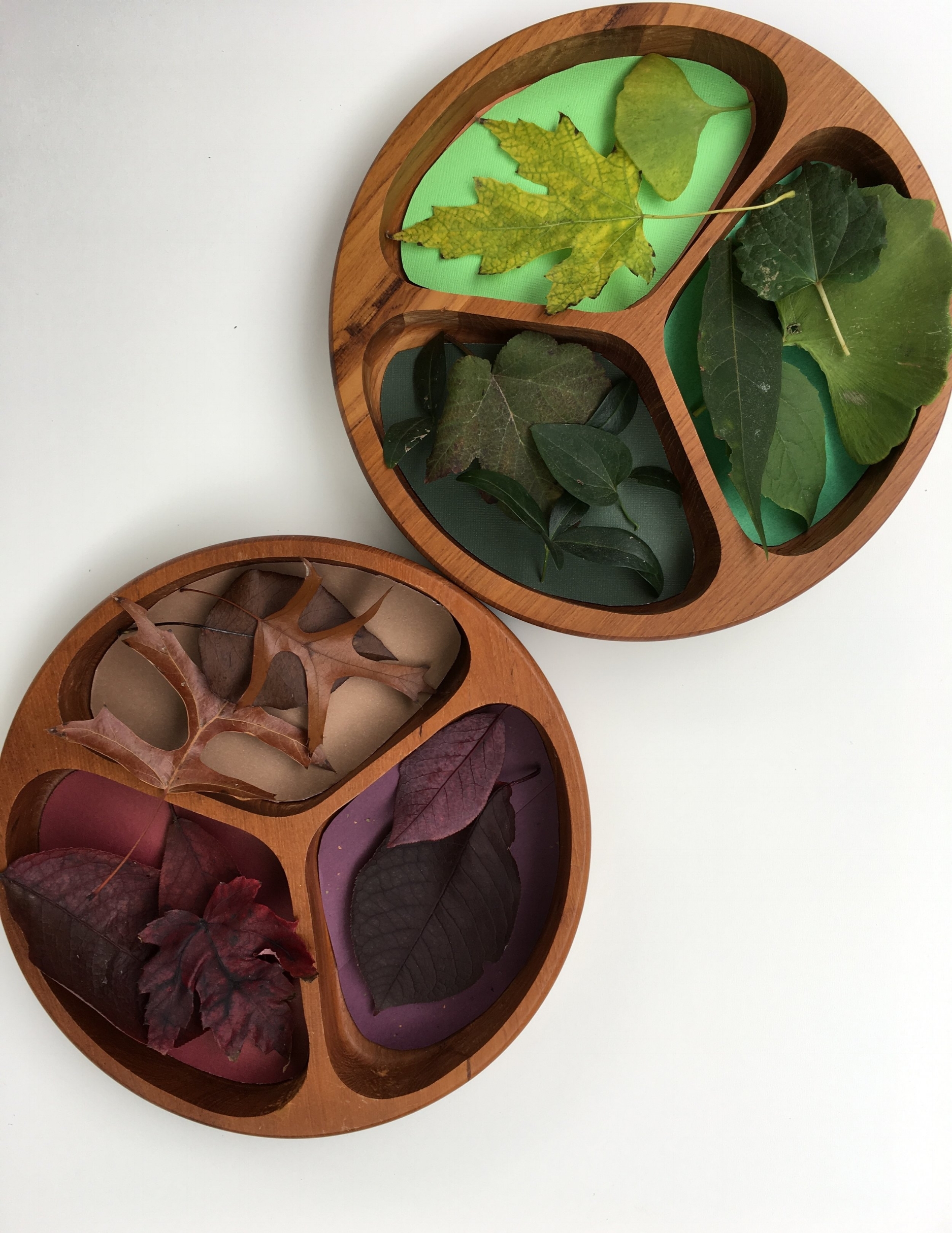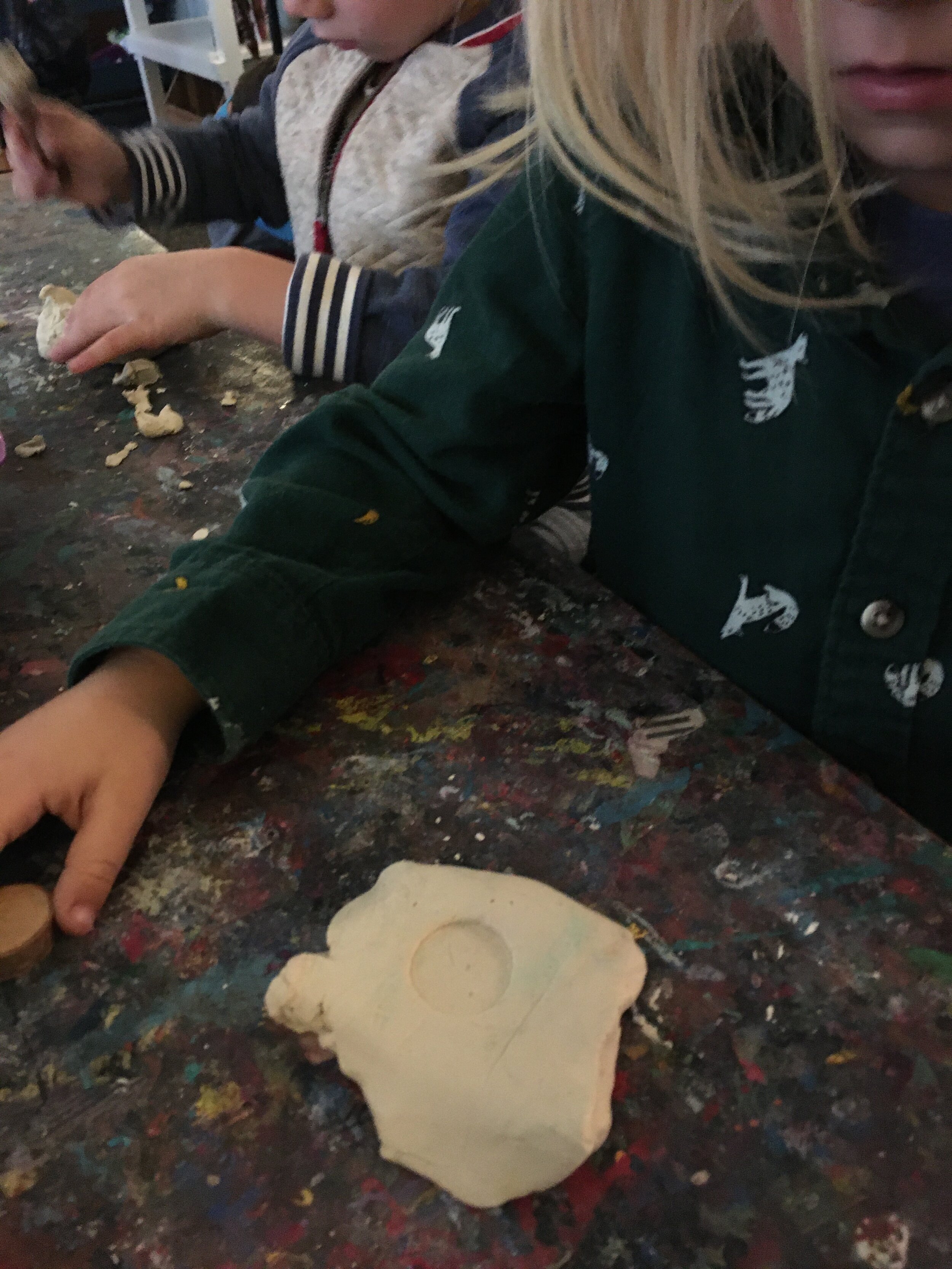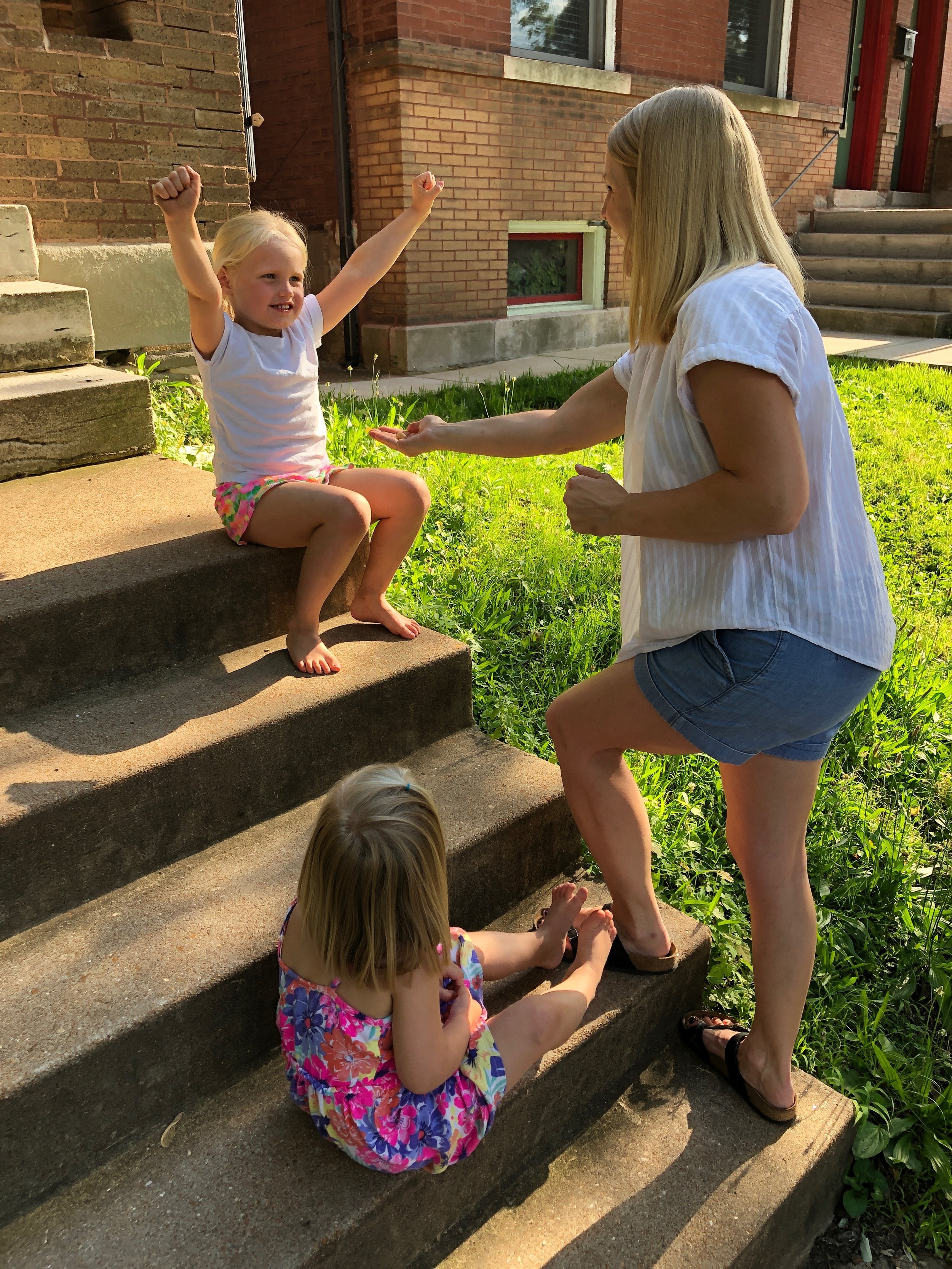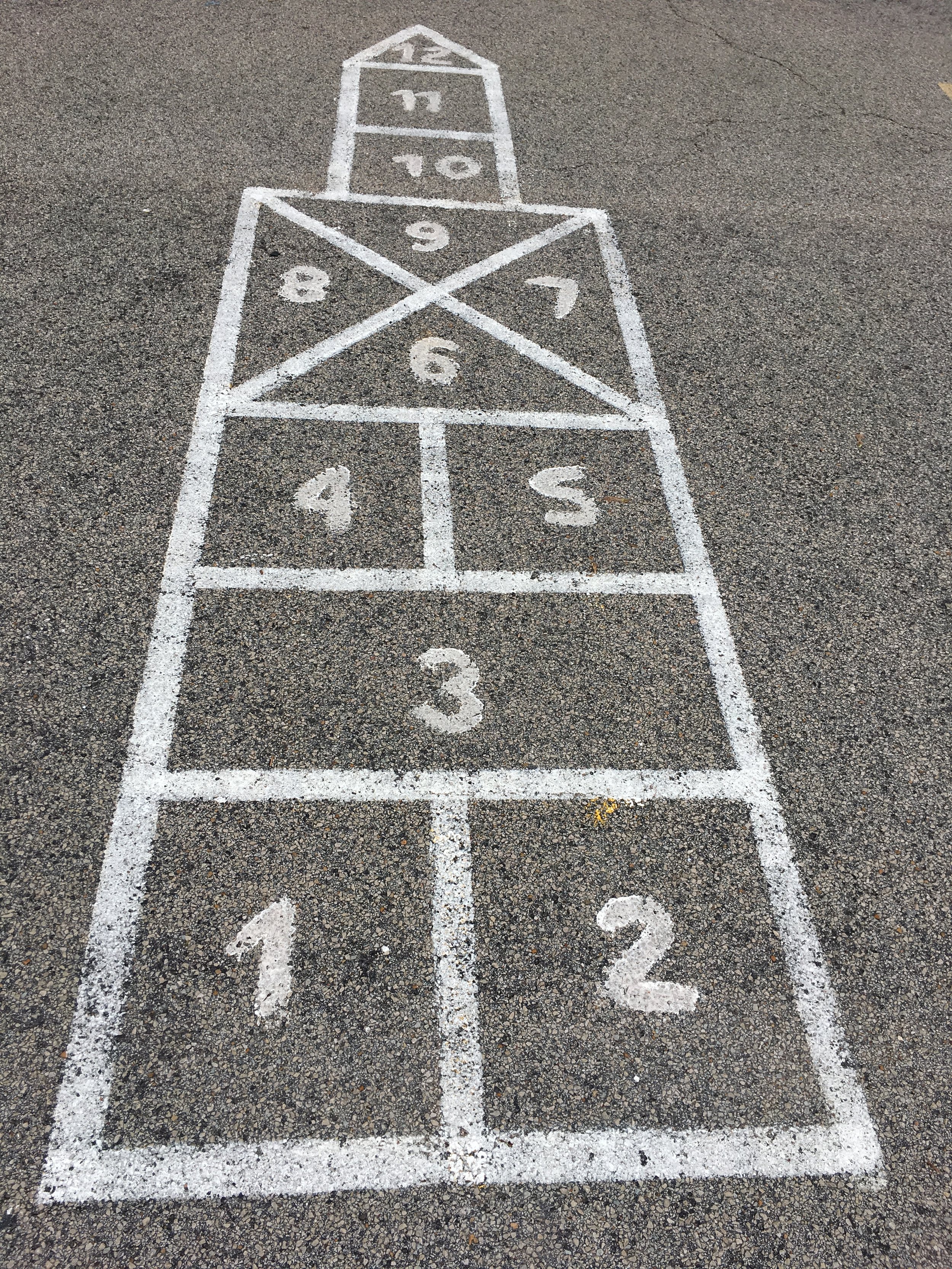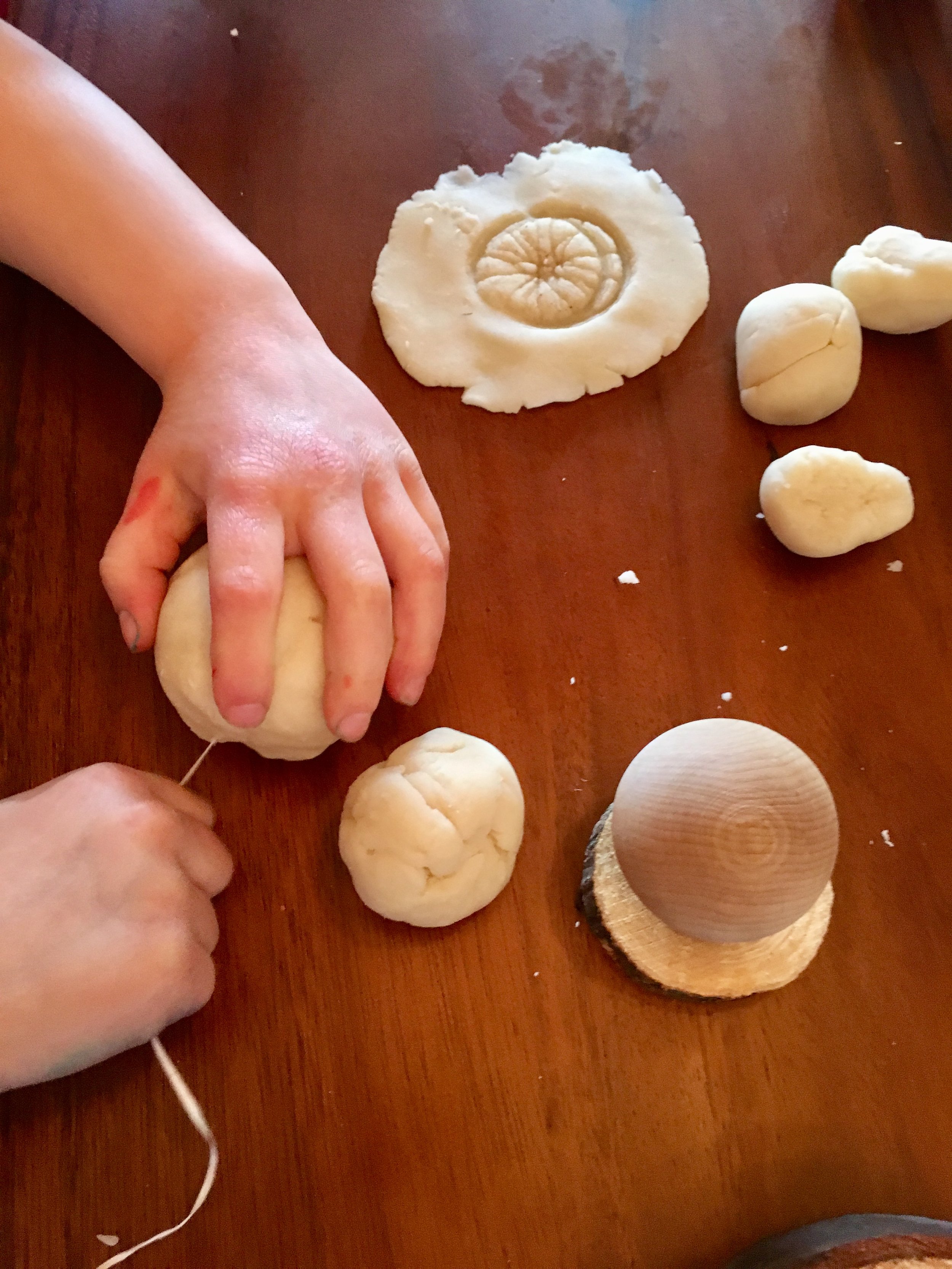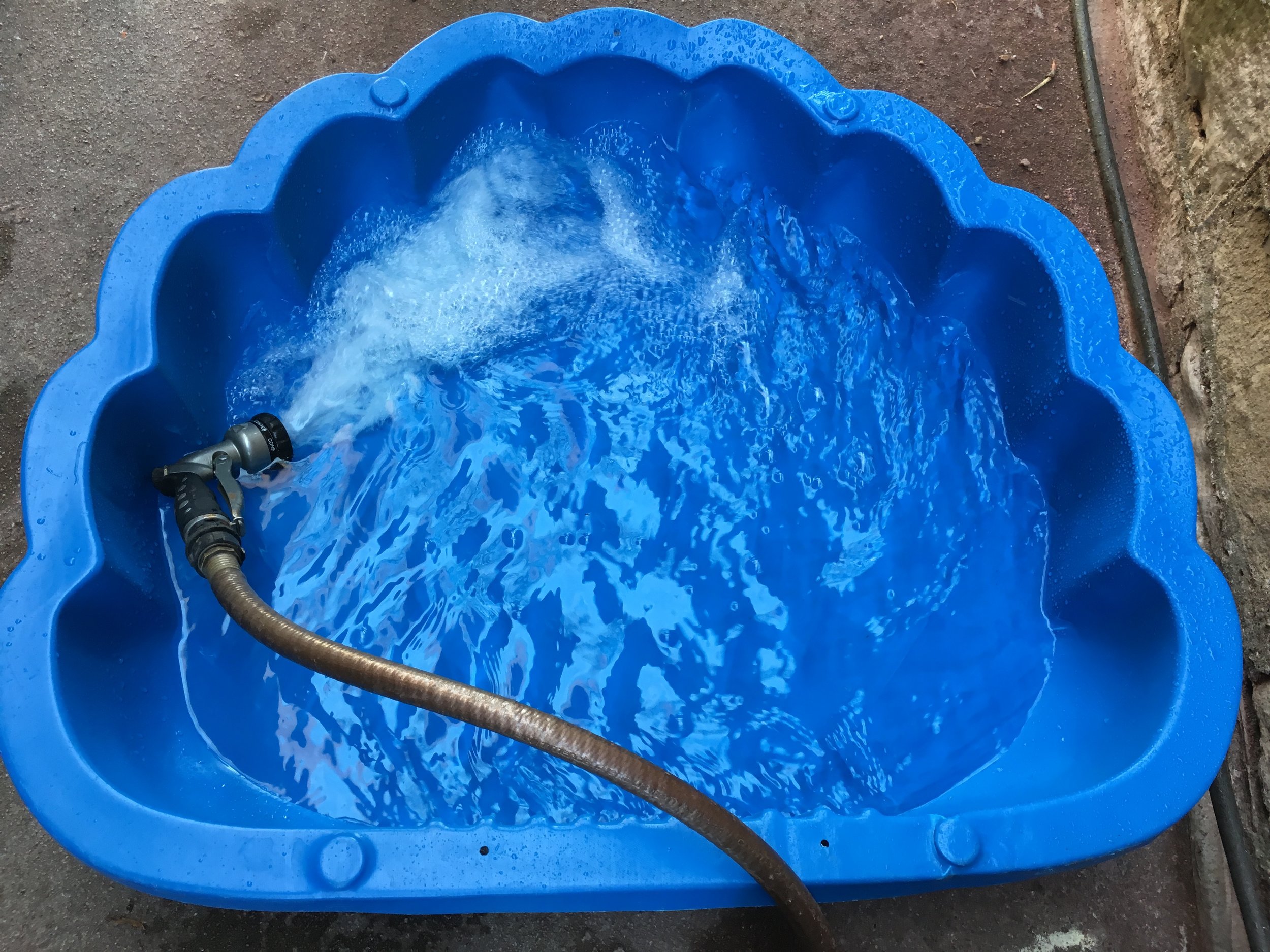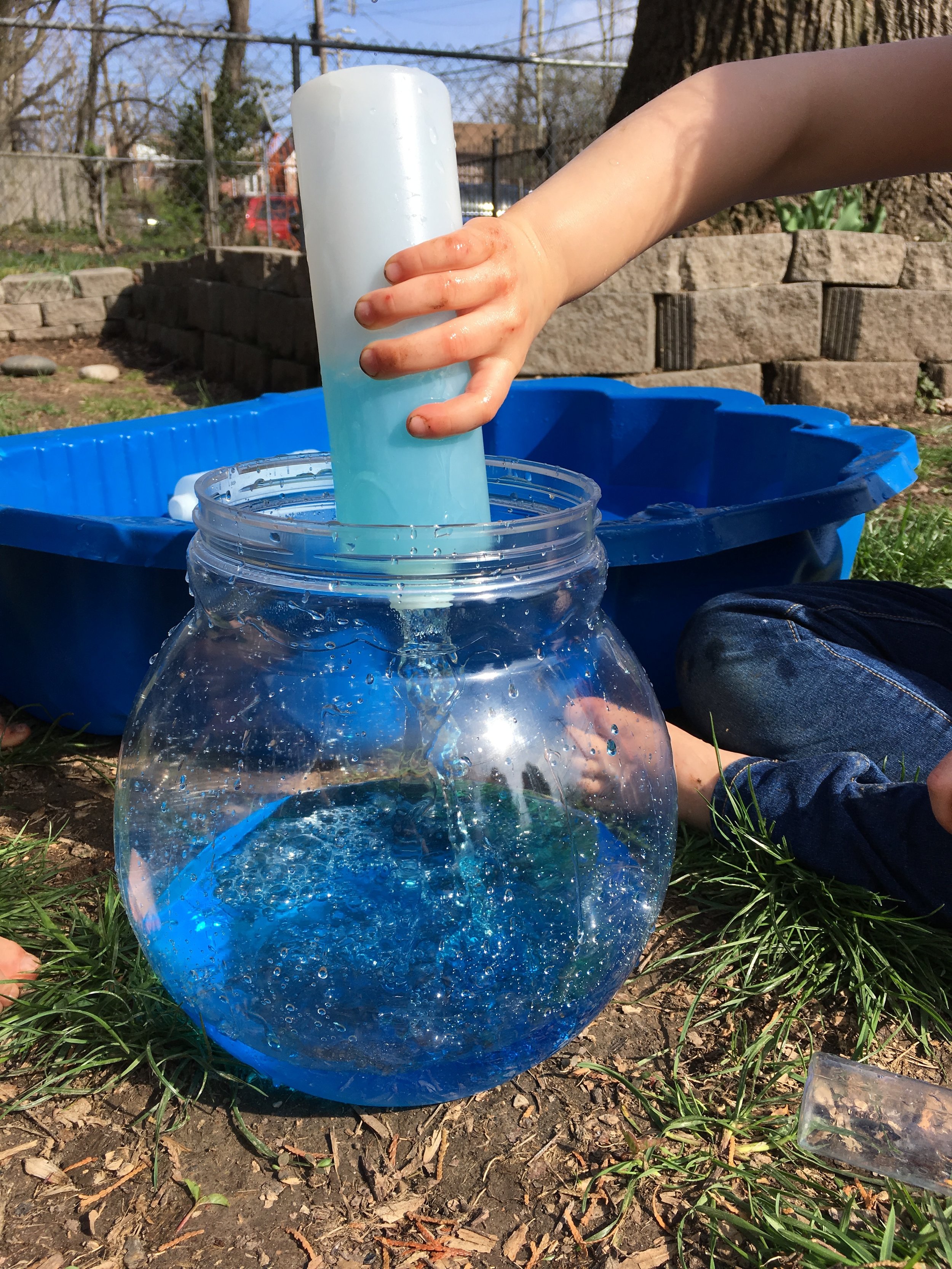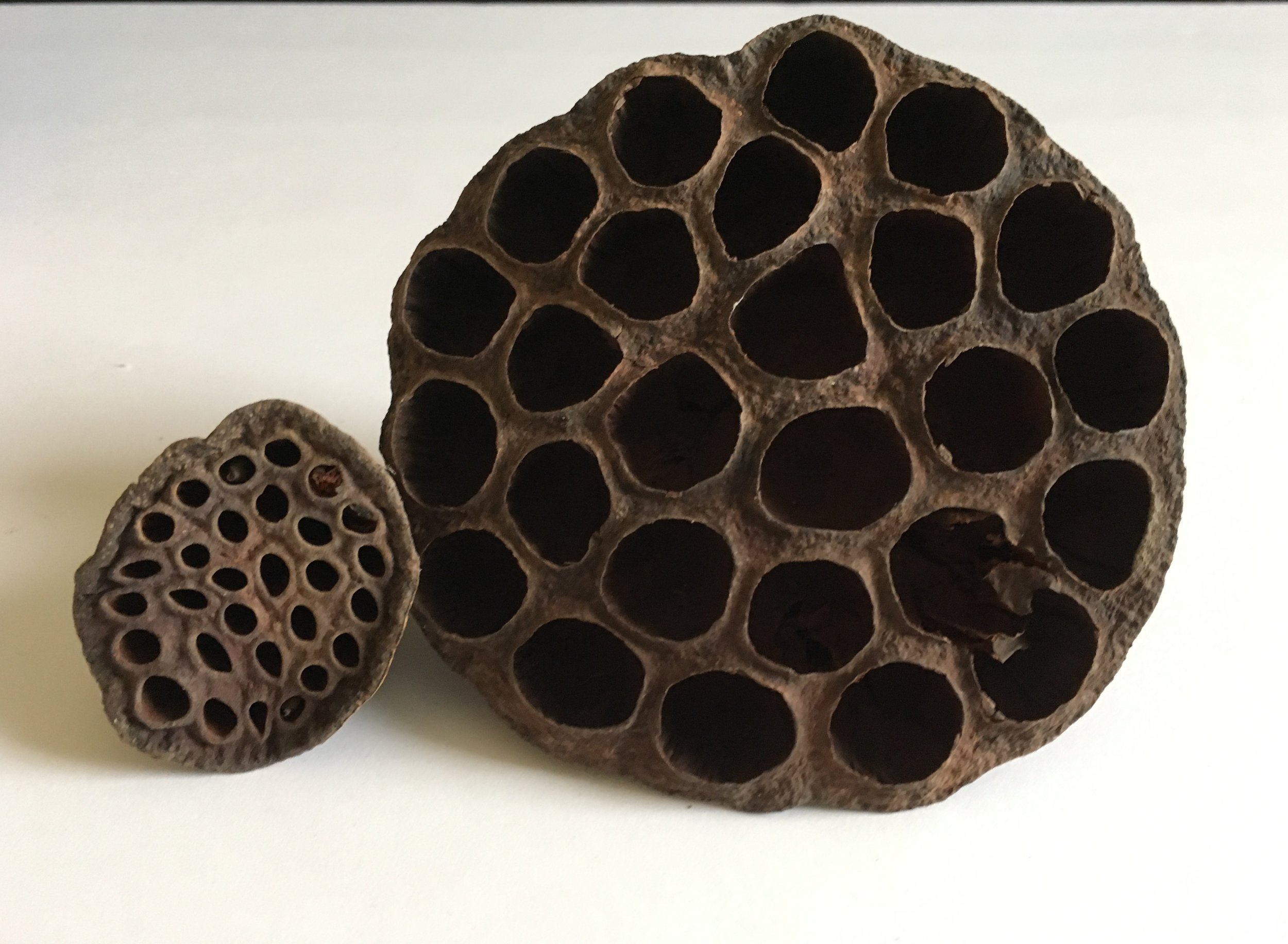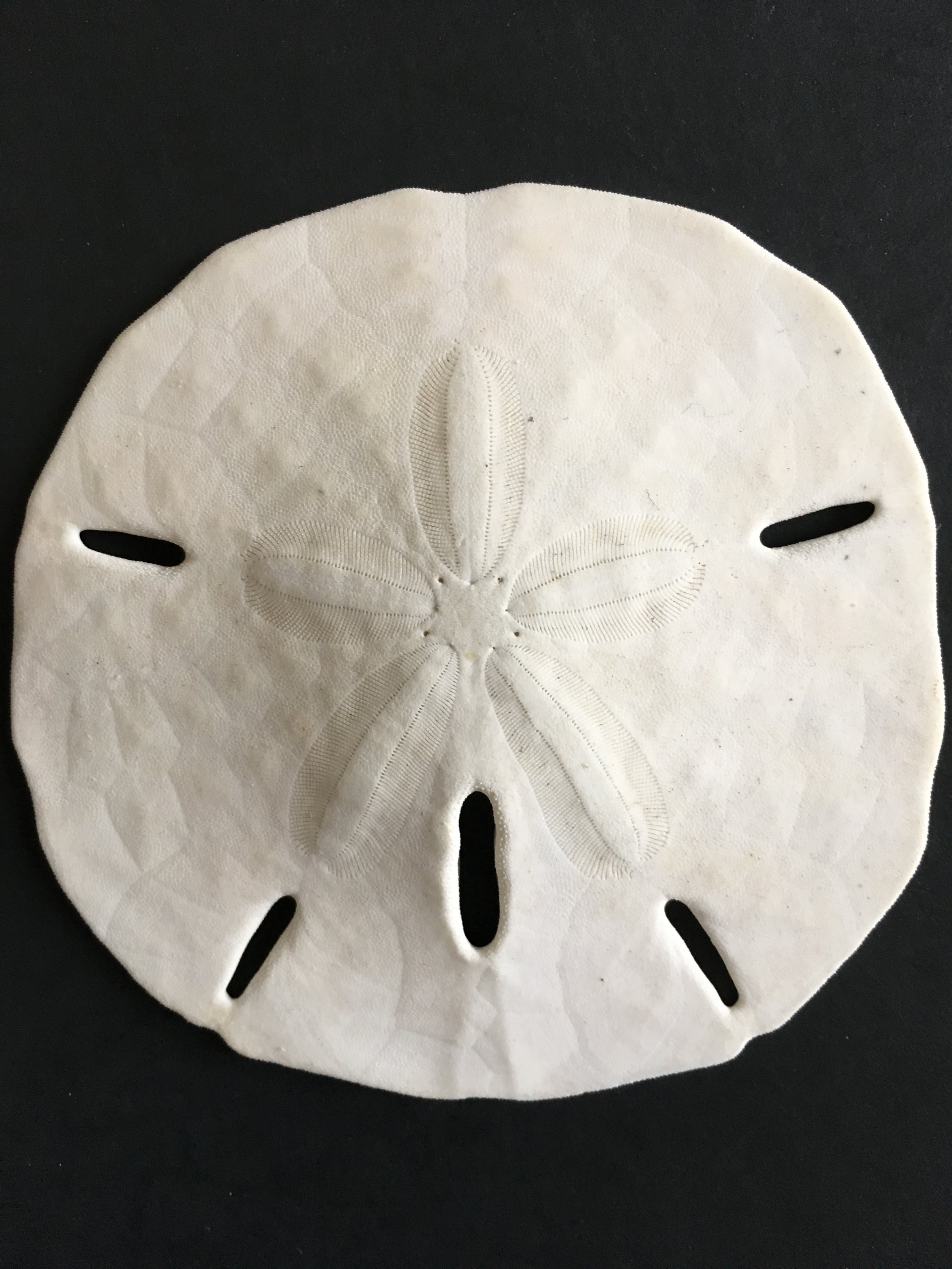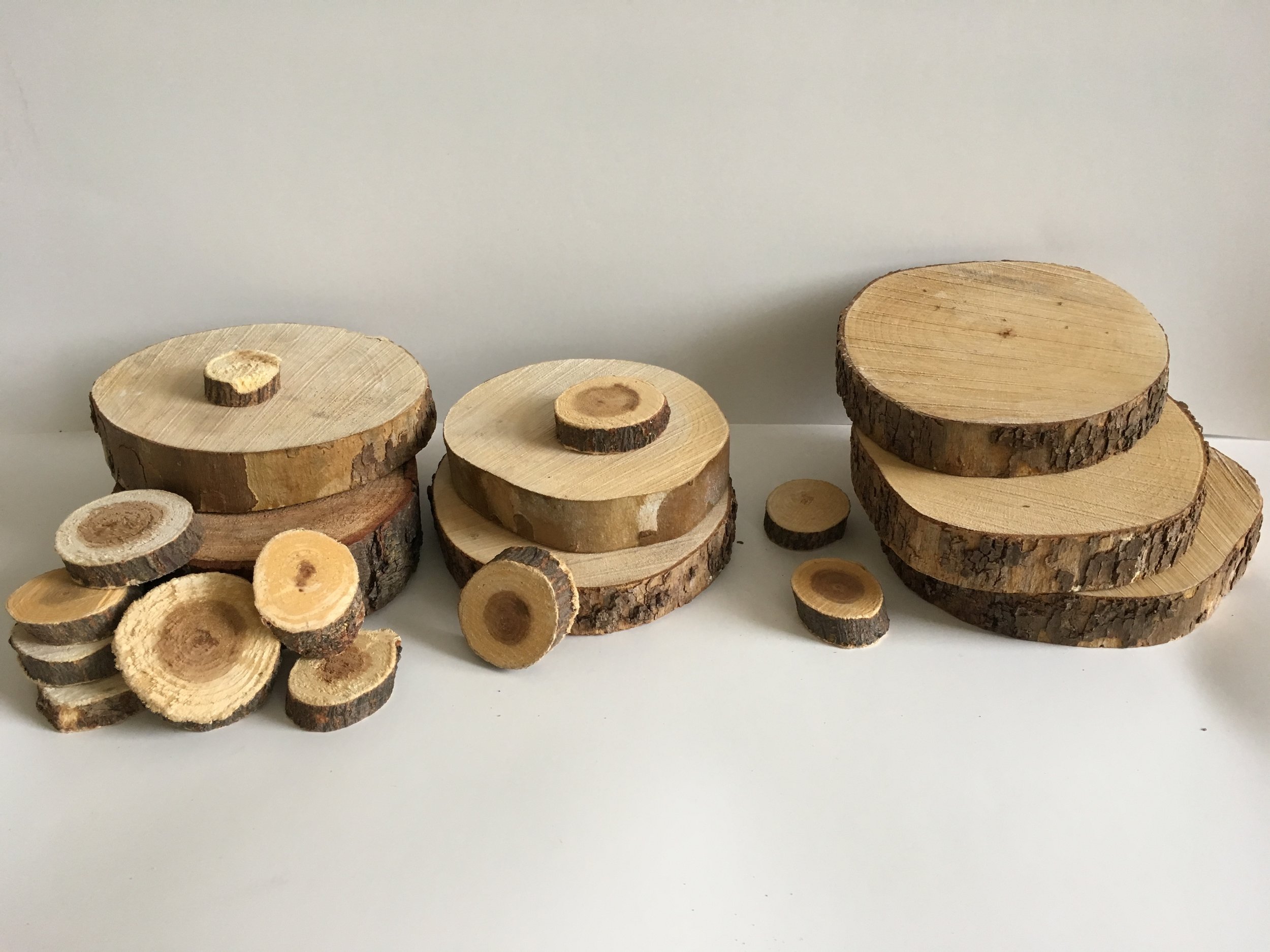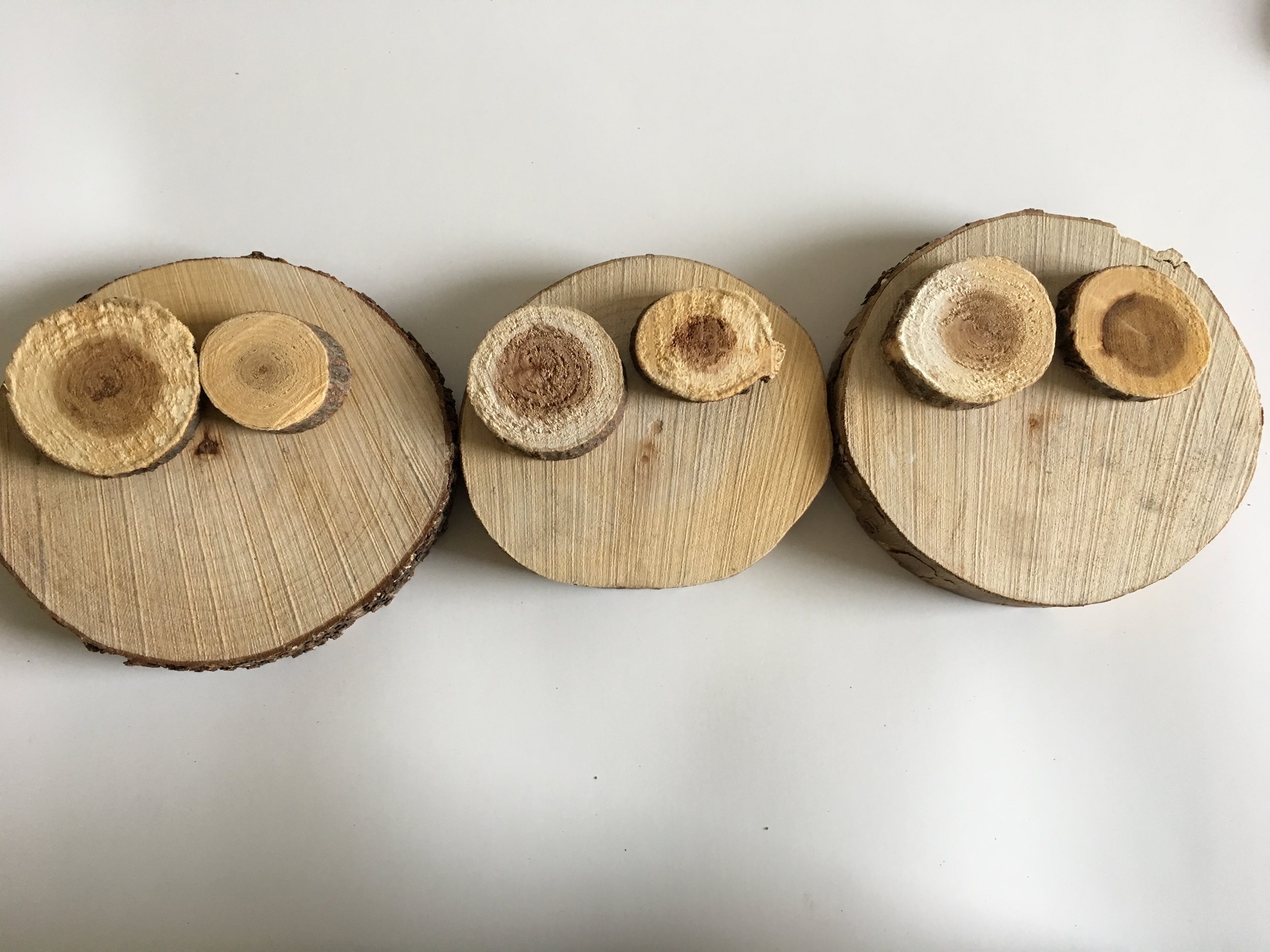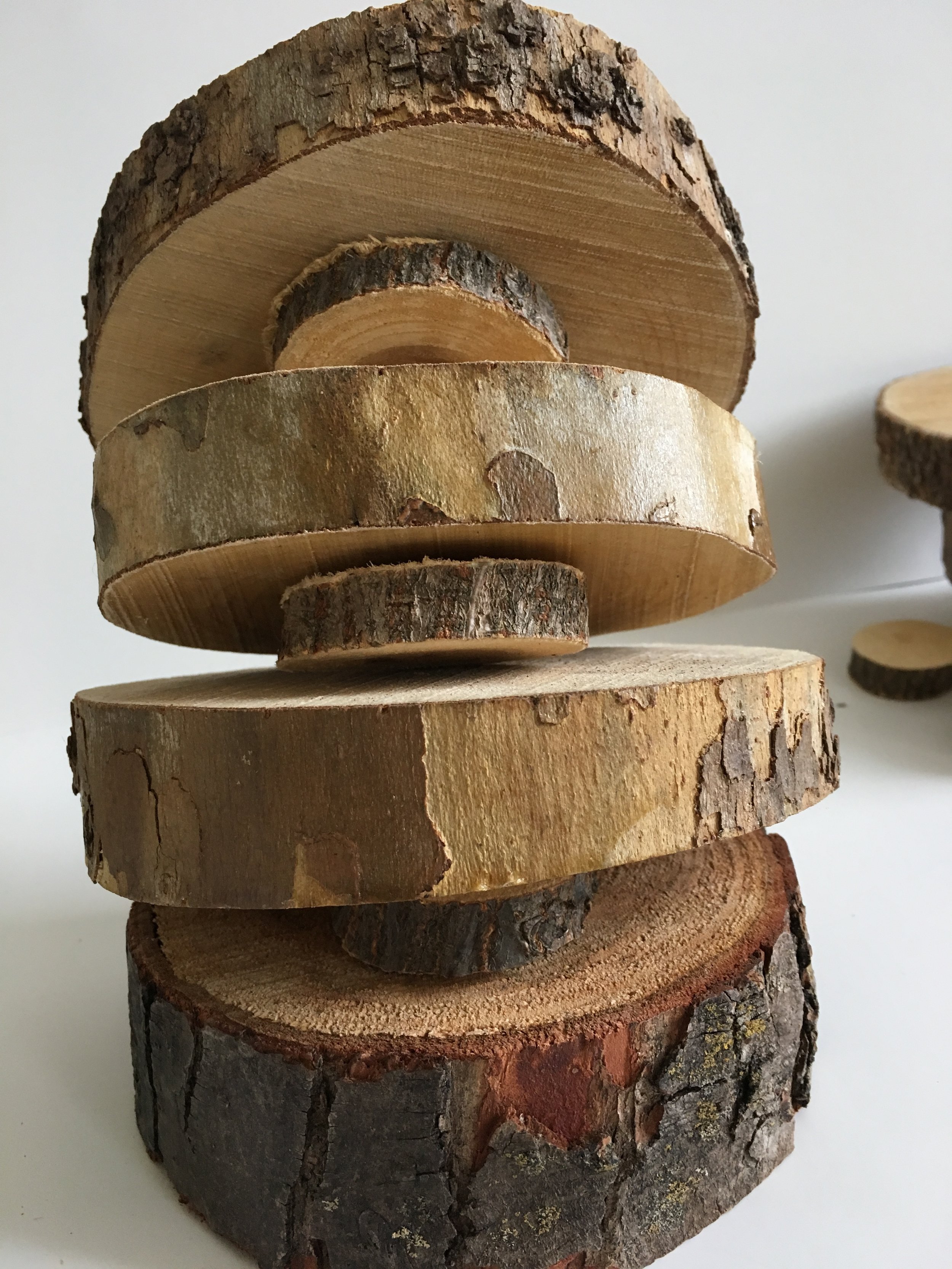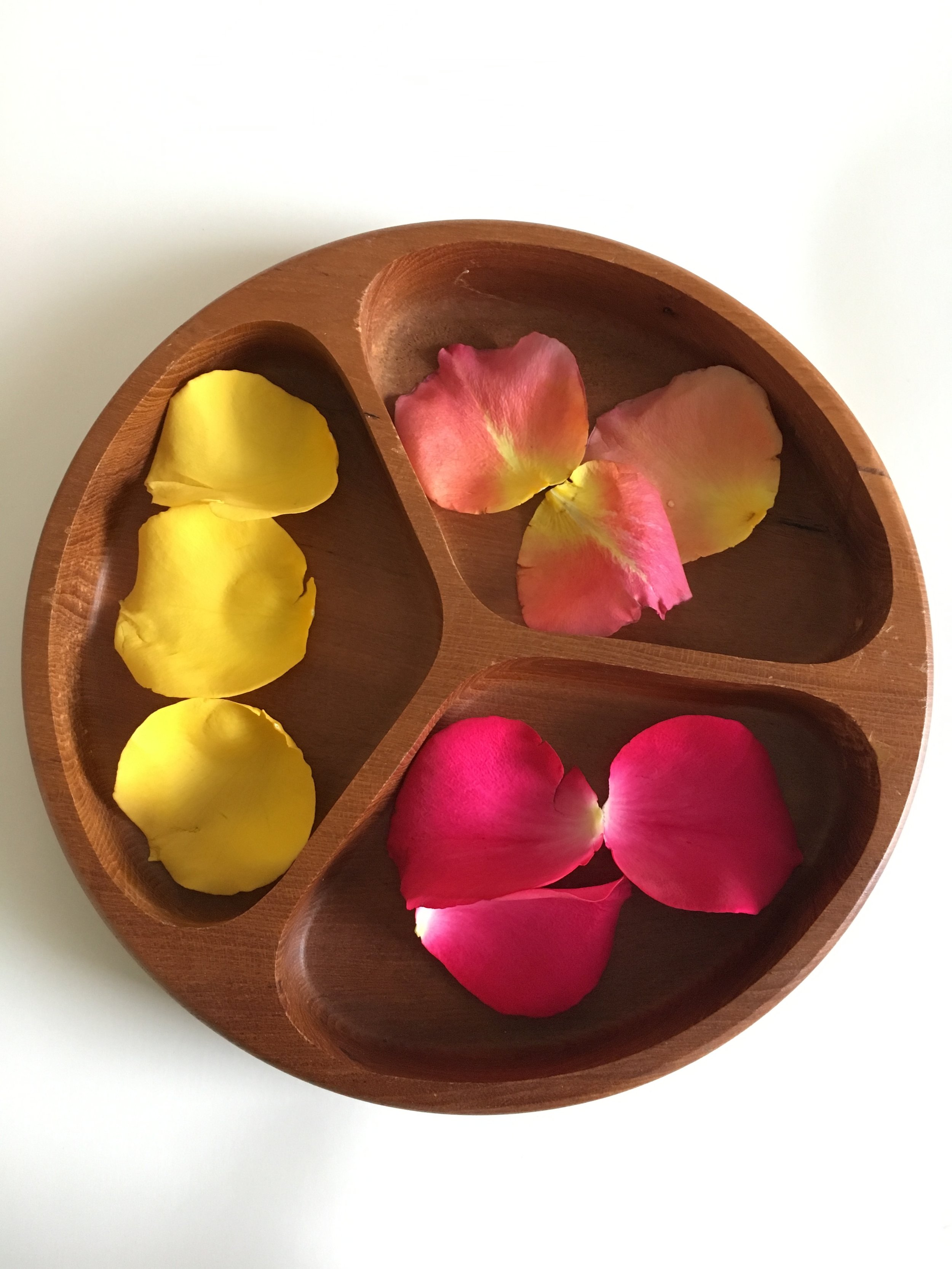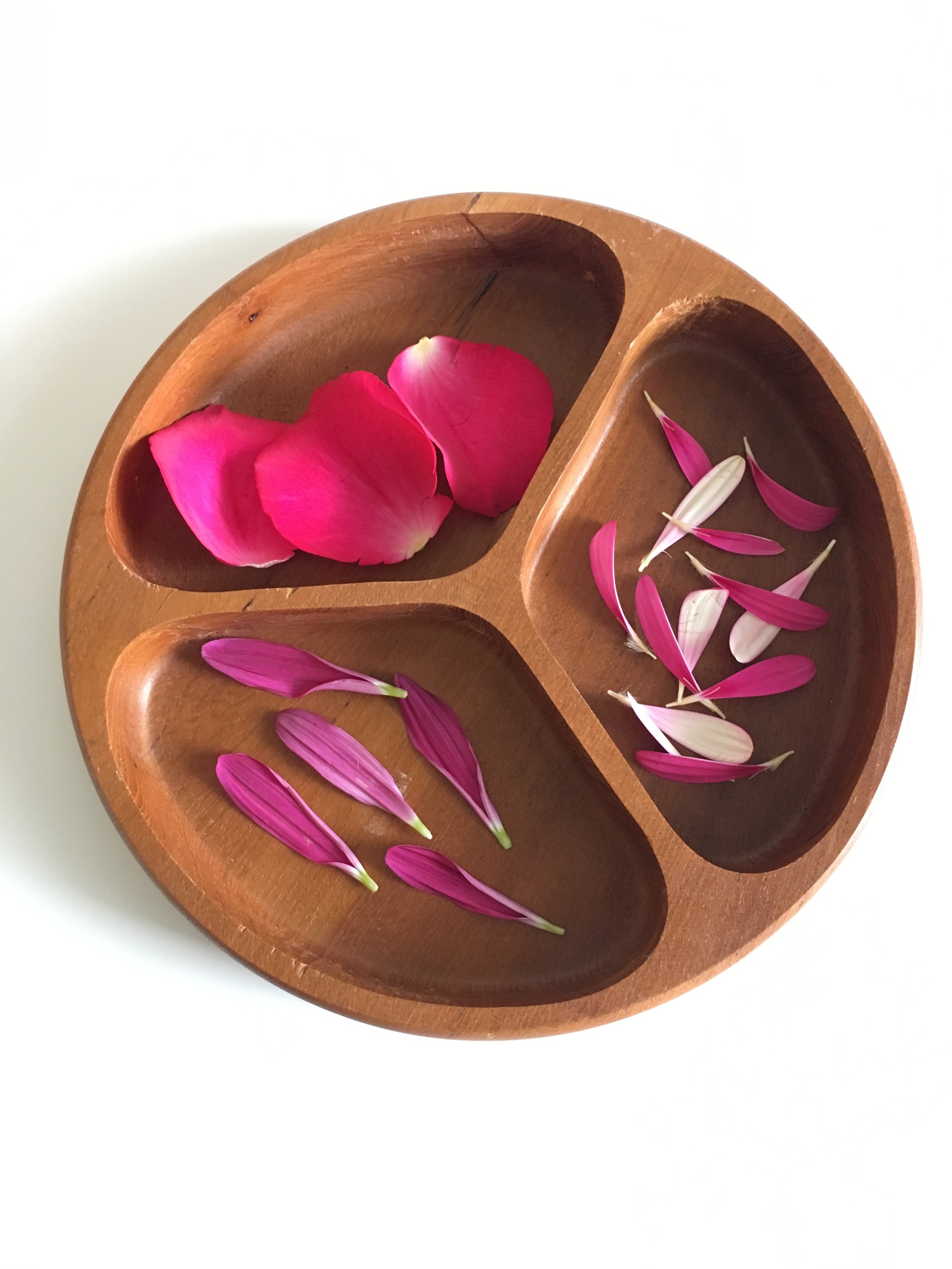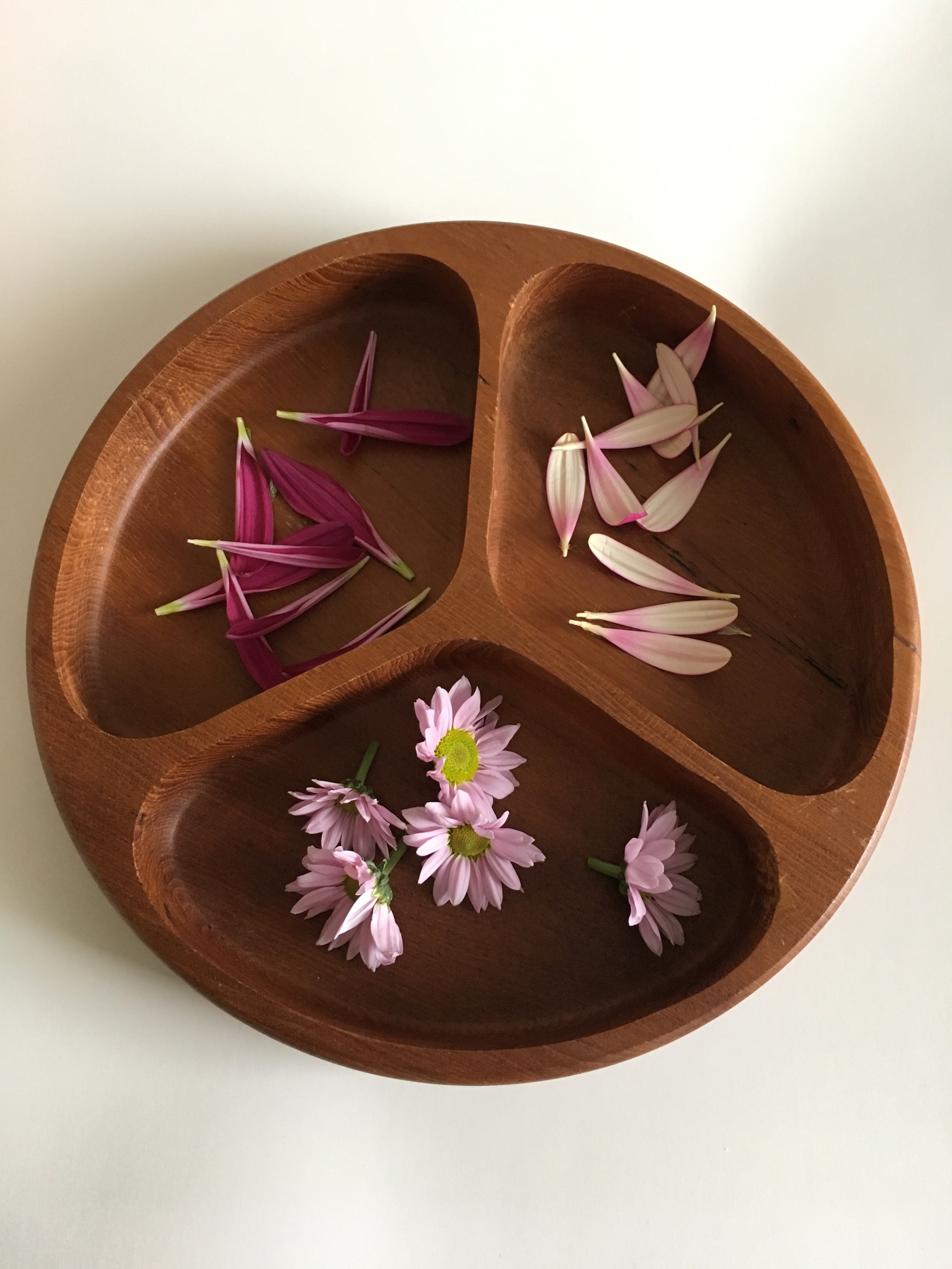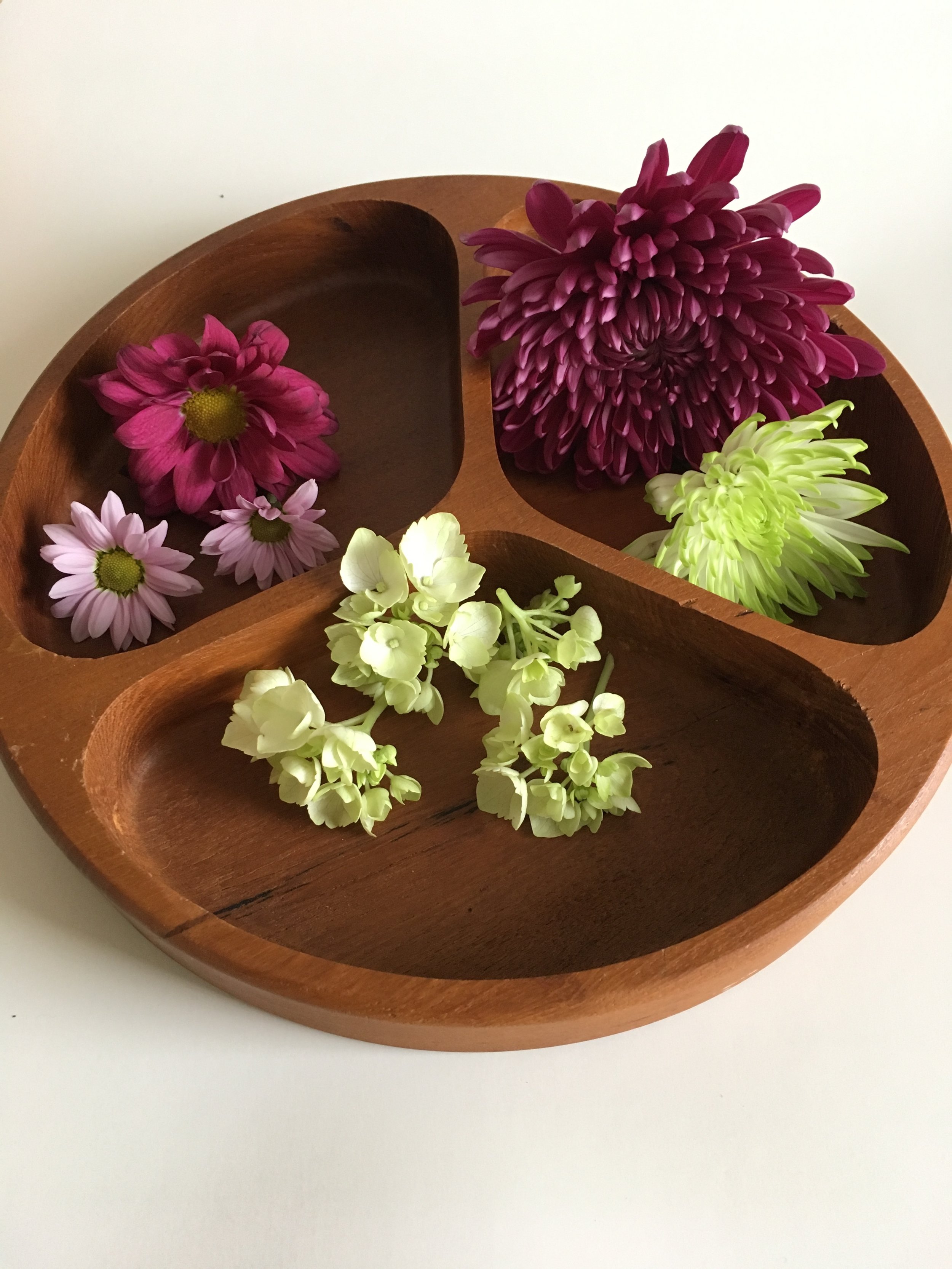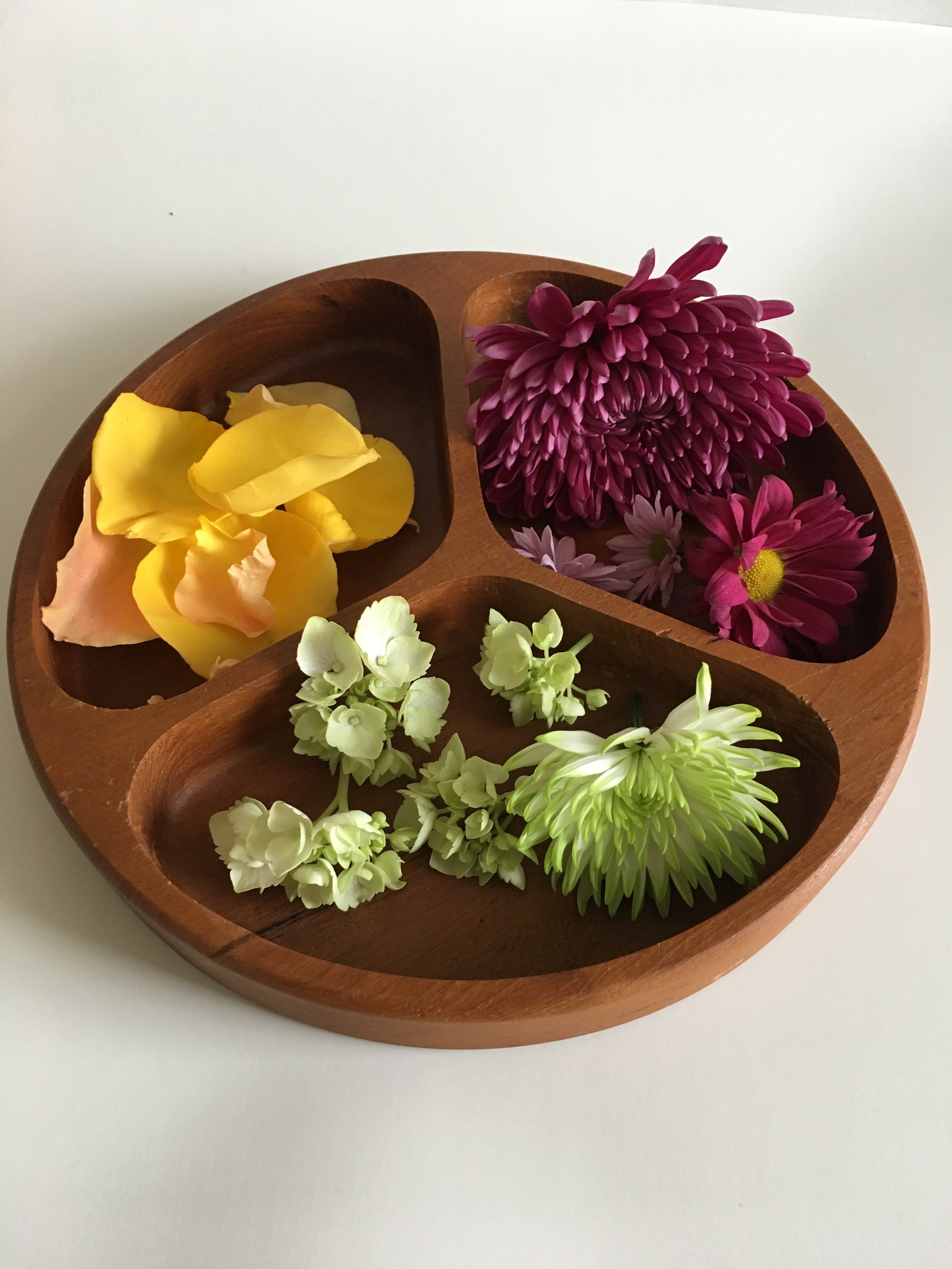This year, while spending so much time around home, we are feeling particularly in tune with the change of season while strolling through our neighborhood. We watched the bare branches bud and blossom, now we celebrate trees bursting with bright green leaves.
We are also spending more time thinking about long term projects around our home since our plans for summer trips, camps, and playdates are in a state of limbo. We ordered seeds and started growing vegetables in our community garden. This is a distraction from the uncertainty. Yet, these seeds have inspired many learning opportunities for my young children. At first they wondered if they would grow at all. Eventually, with patience and the passing of time, they began to see tiny sprouts. They compared which sprout grew the fastest and which was the tallest or smallest. Math talk emerged as we watched these sprouts grow.
We are playing outside nearly everyday using recycled materials and natural loose parts in many different ways. Here are a few ways my children have explored math during this time at home:
Practice number identification and formation using loose parts.
Write numbers on river stones using water and brushes.
Pattern using various colored rocks. Sometimes the simplest activities and materials seem to hold their attention the longest!
Happy 50th Anniversary of Earth Day!

